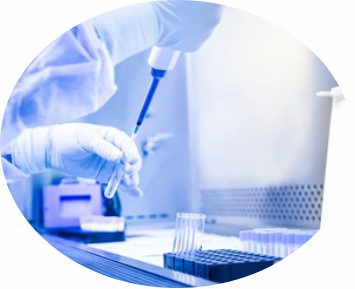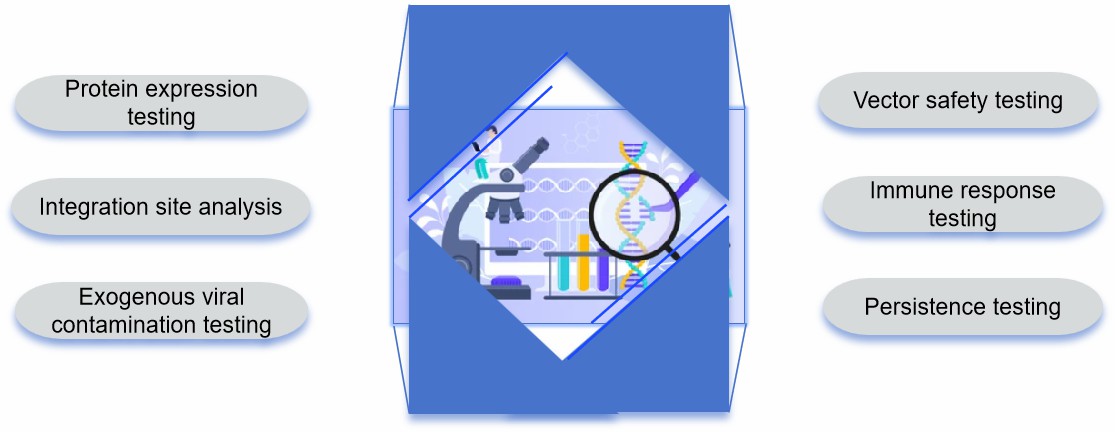Gene Therapy Expert Biosafety Testing
Inquiry
The swift progression of gene therapy has garnered significant international interest, particularly for its therapeutic potential across a spectrum of medical conditions. Yet, the intricacies of gene manipulation present certain challenges, including the possibility of unforeseen risks. To address these, meticulous biosafety evaluations are indispensable, ensuring that the gene therapies developed are both secure and potent.
CD Formulation boasts a rich history in the realm of gene therapy research, having honed our skills over many years. We pride ourselves on offering in-depth biosafety testing services that are integral to the lifecycle of gene therapy product development. Our commitment to excellence in this domain guarantees that the therapies we help bring to market are not only safe but also highly effective for their intended use.
Why Conduct Gene Therapy Expert Biosafety Testing?
- Ensure the safety of gene therapy. Gene therapy may cause unpredictable side effects or immune reactions. Biosafety testing can help identify and prevent these adverse reactions, ensuring a safe course of treatment for patients.
- Ensure the effectiveness of gene therapy. Biosafety testing can ensure that therapeutic genes are stably expressed in cells by detecting integration sites in the genome, guaranteeing the durability and stability of therapeutic effects.
- Meet regulatory requirements. We conduct biosafety testing for gene therapy research to ensure that our research services meet the regulatory requirements of the relevant authorities and to facilitate the smooth translation of research results into clinical treatments.

Our Services for Gene Therapy Expert Biosafety Testing
Biosafety testing covers many aspects of gene therapy product development, including but not limited to the following.
Vector safety testing
This process includes insertional mutagenesis risk assessment, which entails testing whether the gene vector causes genomic insertional mutagenesis that may lead to tumorigenicity or cellular dysfunction. It also needs yah replicative capacity assay for viral vectors, which is used to confirm that viral vectors are replication-competent to avoid unintended viral spread.
Immune response assessment
The main need is to assess whether the gene therapy product will trigger a strong reaction of the immune system, such as the production of antibodies against the vector or the transgenic product.
Persistence determination
Detect the persistence of gene therapy products in vivo, including the persistence existence and degradation of gene expression and vectors.
Protein expression assay
Evaluate whether the genes introduced by the treatment correctly express the corresponding proteins through western blot, ELISA, and other methods.
Integration site analysis
Evaluate the integration of therapeutic genes at random or specific sites in the genome using e.g. advanced sequencing technologies.
Detection of exogenous viral contamination
Ensure products are free of exogenous viral contamination, including the detection of exogenous DNA and RNA by PCR.
Product purity and consistency testing
We confirm the consistency of the purity of each component of the product through methods such as high-performance liquid chromatography (HPLC) and capillary electrophoresis. It is also necessary to ensure consistency in activity and safety from batch to batch.
Other aspects
- Sterility testing
- Mycoplasma testing
- Viral vector testing
- Foreign substance testing
- In vivo testing
- Specific contaminant testing
 Fig.1 Biosafety testing services. (CD Formulation)
Fig.1 Biosafety testing services. (CD Formulation)
Our Platforms for Gene Therapy Expert Biosafety Testing
| Platforms & Technologies |
Content Description |
| Cell bank testing |
Includes comprehensive cell bank testing services for master cell banks (MCB), working cell banks (WCB) to production end cells (EoPC / CAL) to ensure contamination-free cell banks. |
| Genetic stability testing |
STR analysis (DNA fingerprinting), insertion or target sequence comparison using NGS technology for cell line identification and purity (monoclonality) assessment. |
| RNAseq transcriptome sequencing |
This technology can be used in place of traditional in vivo testing for cell banking, providing a higher level of safety assurance. |
Highlights of Our Gene Therapy Expert Biosafety Testing
- Our team of regulatory experts and experienced scientists will help you address the issues you face as your program progresses.
- We offer the most comprehensive global testing capabilities and expertise, quality systems and data integrity.
- We offer comprehensive, fully cGMP-compliant viral safety services at multiple stages of gene therapy product development and research.
- We offer comprehensive biosafety testing, including the development and validation of unique assays.
Published Data
Technology: Plasmid DNA-loaded nanoliposomes development
Journal: Curr Gene Ther
IF: 4.6
Published: 2013
The article discusses the modified vaccinia virus Ankara (MVA), originally developed as a smallpox vaccine, which has been extensively tested for use in vaccination and gene therapy since the 1990s. While MVA is known for its safety, the article emphasizes the importance of considering biosafety when assessing recombinant MVA (rMVA) for clinical trials. It outlines the key factors to be evaluated, including the characteristics of rMVA, the nature of the inserted foreign genes, and the potential for reversion, recombination, and spread. The paper also covers strategies to mitigate the identified risks.
CD Formulation enables researchers to efficiently and reliably assess the identity, purity, potency and quality of a wide range of materials used in a variety of bioprocesses. We offer established GMP methods, as well as customized method development to meet unique customer needs. If you are interested in us, please feel free to contact us.
References
- Goossens M, et al. Environmental risk assessment of clinical trials involving modified vaccinia virus Ankara (MVA)-based vectors. Curr Gene Ther. 2013, 13(6):413-20.
Related Services


 Fig.1 Biosafety testing services. (CD Formulation)
Fig.1 Biosafety testing services. (CD Formulation)